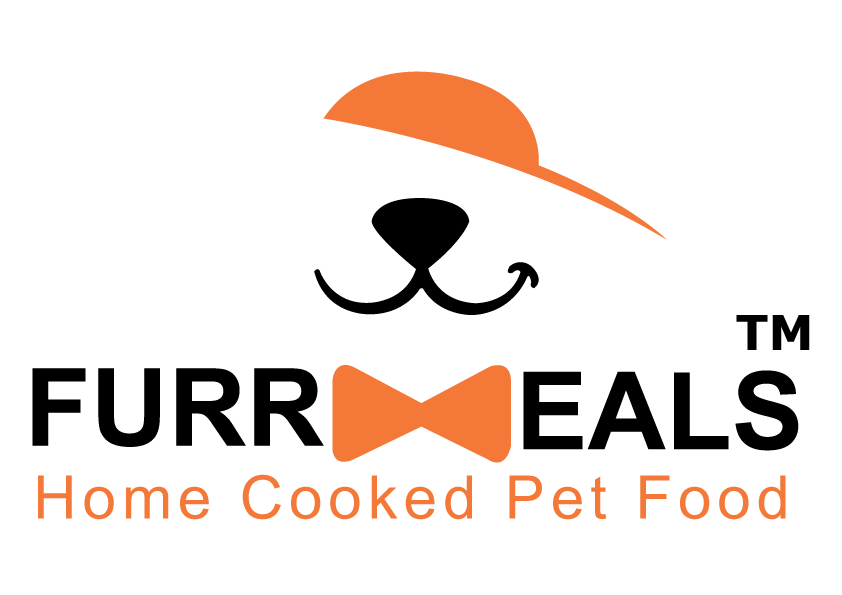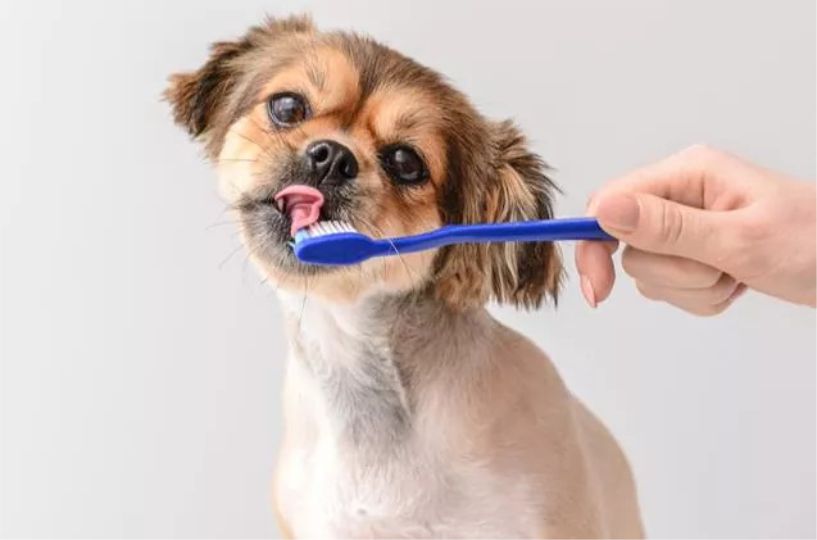So one day, your dog’s breath smells bad, and you wonder if you can brush his teeth with a bit of your toothpaste to get that all familiar minty fresh breath. And, suddenly, like a responsible pet parent that you are, you wonder, “Is toothpaste bad for dogs?”
If you, too, are one of those pet parents who have faced this dilemma and thought of using your toothpaste to brush your furry’s teeth, then you must read the on.
Is Human toothpaste bad for dogs?
You share almost everything with your dog. Your home, your bed, your pillow, your cookies, your feelings, and you even pick up your dog’s medication from the human pharmacy. While sharing all that is fine, you must draw the line to share your toothpaste and toothbrush because human toothpaste is bad for dogs. Toothpaste is a major health hazard for your furry. In fact

Why is toothpaste bad for dogs?
3 components in human toothpaste that make it great for humans while at the same time extremely toxic for our furry friends are:
1- Fluoride: Toothpaste is designed to rinse out of the mouth and not be swallowed because Fluoride in toothpaste is not meant to be ingested. Humans have learned it over the years as we were trained to do so since our childhood, but how do you explain that to your Golden Retriever pup?
If your furry consumes a large amount of Fluoride in one go, then acute fluoride toxicity can occur due to long-term ingestion. When pet parents use their Fluoride toothpaste to brush their furry’s teeth, then due to toothpaste’s frequent use for months or years, the dog’s body ingests so much Fluoride that it reaches the toxic level in the body.

If you wonder if it is bad for dogs to eat toothpaste, then yes, it is very bad for dogs to eat toothpaste because most human toothpaste contains Fluoride in high enough quantity to poison a dog.
2- Sodium Lauryl Sulfate (SLS): The foam you get while brushing is due to a chemical called Sodium Lauryl Sulfate or SLS. SLS is used to create foam in most human hygiene products like shampoos, soaps, laundry detergent, and even toothpaste. The U.S. Food and Drug Administration (FDA) regards SLS as safe for only short-term topical use in humans.
In dogs, SLS ingestion in sufficient quantity can cause gastrointestinal upset. That is why the pet-friendly toothpaste in the market does not contain foam. SLS is another reason why we need to say ‘Yes’ to your question that ‘Is human toothpaste bad for dogs?
3- Xylitol: You may have already heard of Xylitol and how it is increasingly becoming a part of our everyday life as a common sugar substitute in food. Xylitol is a sugar alcohol that is one of the ingredients of human toothpaste and is considered safe for humans. However, the toxicity of this product in our canine companions is rapid.
Ingesting a large amount of Xylitol can cause a life-threatening condition in dogs by reducing the sugar levels drastically within 10-15 minutes. Eating a large quantity of any product containing Xylitol, like toothpaste, mint candy, sugar-free chewing gums, or any human food containing the natural sweetener Xylitol can cause liver failure in dogs.

Xylitol is extremely dangerous for your dog, and this is one of the main ingredients that make human toothpaste poisonous for dogs. It can cause 2 problems in your dog’s system – sudden low blood sugar and irreversible liver damage, both of which can be fatal for dogs.
Some of the signs of Xylitol poisoning in dogs are:
- Vomiting
- Lethargy
- Lack of muscle coordination
- Black tarry stool
- Seizures
- Collapse
- Coma and can even cause death
Diagnosis of toothpaste poisoning in dogs
While most dogs will show an immediate toxic reaction to the toothpaste, some dogs will not show any sign until the liver is irreversibly damaged.
If you happen to catch your dog in the act of eating your toothpaste, then it is best to rush to the vet. After verifying your concerns, the vet will do a complete blood profile to check for hypoglycemia (low blood sugar) and a liver report to ensure no liver damage.
What kind of toothpaste is bad for dogs?
Not all toothpaste is bad for dogs; in fact, the market is flooded with pet-friendly toothpaste specially designed for dogs. Dogs will swallow the toothpaste, so pet-friendly toothpaste is designed to be swallowed and are free of Fluorides, Xylitol and Sodium Sulfate. However, as a responsible pet parent, it is your responsibility to check each product’s label that you buy for your pet to ensure that it is 100% safe and healthy.
Causes of bad breath in dogs:
You love to cuddle with your furry and get wet kisses on your face, but sometimes their bad breath can be a mood killer. A simple sniff test will tell you if your dog has a sticky, unhealthy smell in its mouth.
There are 3 main causes of bad breath in dogs:
1- Poor Dental Hygiene: This is where a doggy toothpaste comes in handy. Try to get your furry in the habit of brushing as early as possible. Try to make it part of their regular grooming.
If your dog has a yellow or brownish layer on the upper side of the teeth, close to the gums, it is because of plaque accumulation. Plaque is a mixture of salt from the saliva and bacteria, living off the food in the mouth. This is one of the causes of bad breath. Consult your vet for a plaque removing and deep cleaning session.
2- Dental Diseases: By far, the most common cause of bad breath in dogs is dental disease. When the plaque starts touching the gums, they cause inflammation of gums called Gingivitis. If untreated, it can damage the sockets of the teeth and spread to the roots. In advanced stages of dental disease, when left undetected and untreated, it not just causes bad breath but can also affect the kidney and heart.
3- Poor Diet: An unhealthy, unbalanced, low moisture diet that causes stomach bloating, acidity, gas, etc., will also result in bad breath in your dog. This can be easily managed by switching to a fresh and balanced food diet like FurrMeals Fresh Dog Food. Giving a fresh, wholesome diet with a variety of protein options keeps your dog’s gut healthy, and this will reduce the chances of bad breath.
Is Dog toothpaste important for your dog’s dental hygiene?
Brushing your dog’s teeth regularly is important for their oral hygiene, and dog toothpaste is more a ‘treat’ for your dog to encourage a positive experience during brushing.
Brushing with a clean, wet cloth can also be equally effective because it is more about the scrubbing away of the food particles and plaque that is important than the actual use of toothpaste. The real benefit of using dog toothpaste is the flavor. Chicken flavored toothpaste makes brushing a happier and pleasant experience for both you and your pet.
You can also make a simply DIT Dog Toothpaste at home by mixing:
- ¼ cup coconut oil
- 3 tbsp baking soda
- ¼ tsp fine sea salt
- ½ tsp cinnamon
So, when someone asks you, “Is toothpaste bad for dogs?” I hope you will now respond by saying, “Yes, human toothpaste is very bad for dogs. But, that does not mean that you should not brush your dog’s teeth. In fact regular brushing should be an integral part of your dog’s grooming. You can try any of the store-bought doggy toothpaste, but check the labels to ensure the 3 evils – Fluoride, Sodium Lauryl Sulfate (SLS) Xylitol are not in the list of ingredients.

